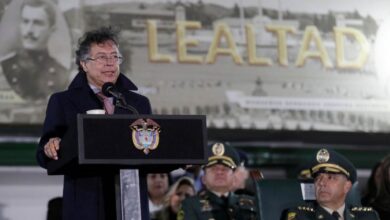Petro’s Emergency Decree in La Guajira Falls : What Was He Looking For And Why Did It Not Happen?
This Monday the Colombian Constitutional Court declared unconstitutional the economic emergency decree in La Guajira that Gustavo Petro had issued. What was the decree seeking and why was it denied? .

Photo: Gustavo Petro
EFE
Listen to this article
Leer en español: Se cae el decreto de emergencia de Petro en La Guajira : ¿Qué buscaba y por qué no pasó?
The Colombian Constitutional Court declared unconstitutional this Monday the economic, social and ecological emergency decree in La Guajira (north) that had been issued last July by President Gustavo Petro to alleviate the high rates of food insecurity and child malnutrition in this desertic department. .
The high court indicated that the full court decided to declare the decree "unenforceable" and granted "deferred effects to this decision for a period of one year, counted from the issuance of Decree 1085 of July 2, 2023, regarding the threat of worsening of the humanitarian crisis due to the reduced availability of water".
What was the decree looking for?
Petro had declared an emergency in that Caribbean department, alleging that "a public calamity is looming, because all the probabilities of the climate models announced a drought that had never been seen before in La Guajira, which aggravates the El Niño phenomenon and the climate crisis".
The president's objective was to use this mechanism in that desert region given the conditions experienced there, especially the lack of access to water and the highest poverty rates in the country, as well as the highest number of child deaths due to malnutrition.
This tool allows you to approve decrees that, usually, should first pass through Congress.
Read also: Colombia: Guajira will be Gustavo Petro's Policy Laboratory
Likewise, the president moved his cabinet to La Guajira at the end of June to govern from there, visit several of the towns in the area and even make announcements regarding energy transition, use of water resources or education, among others.
What is the situation in La Guajira?
La Guajira is the department with the highest figures for child malnutrition, with a total of 1,954 cases of acute malnutrition in children under 5 years of age last year, in a region inhabited mainly by Wayuu indigenous communities who live in very precarious conditions, with difficulties access to water, food and other basic services.
For this reason, the Constitutional Court this Monday ordered the Government and Congress to adopt "the necessary measures to overcome the serious structural humanitarian crisis that exists in the department of La Guajira."
The idea, the court added, is to guarantee "the effectiveness of the fundamental rights of the people who live in that area of the country", as well as to strengthen "the institutions provided for in the legal system with powers in matters of climate change and assign the resources that circumstances demand."





